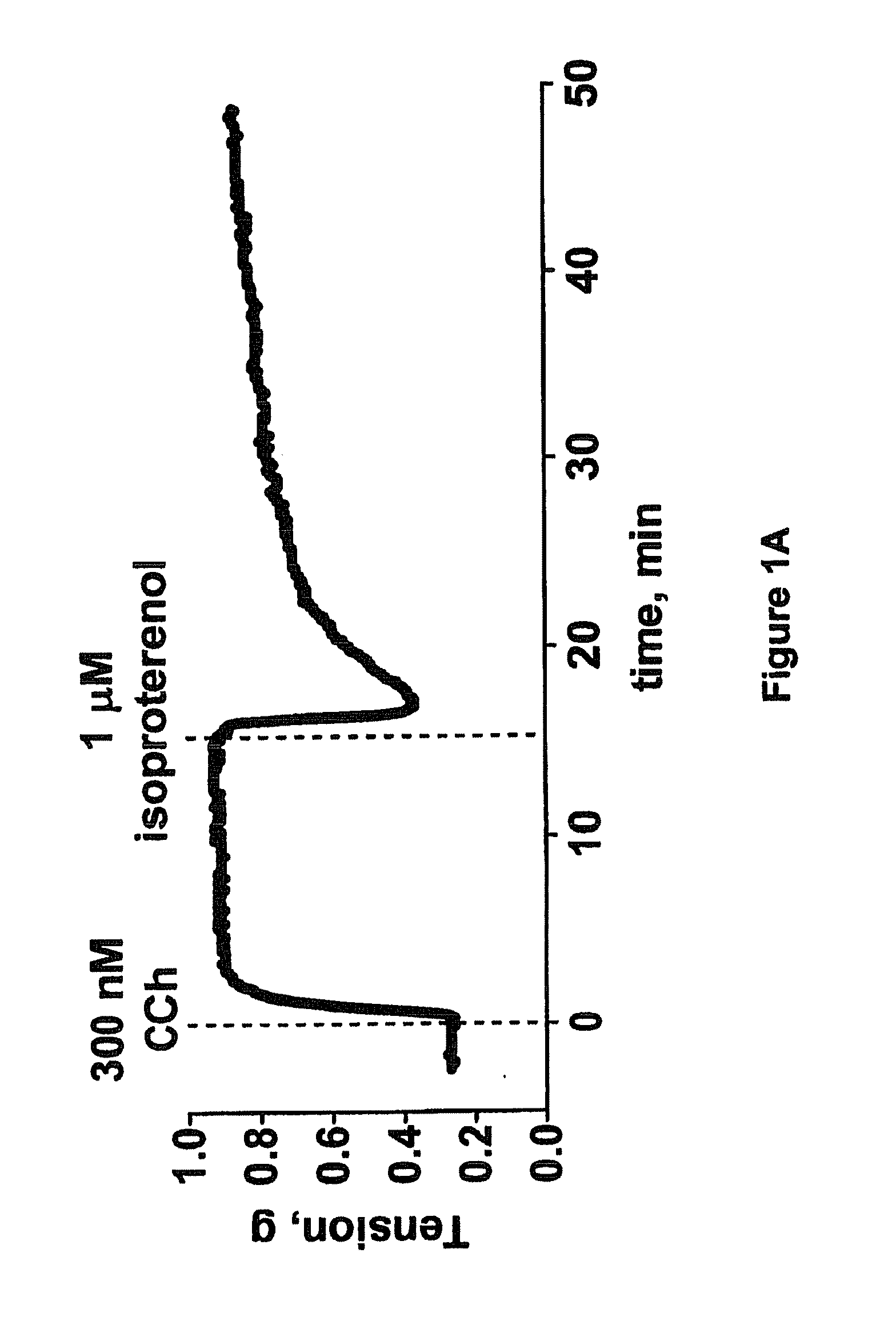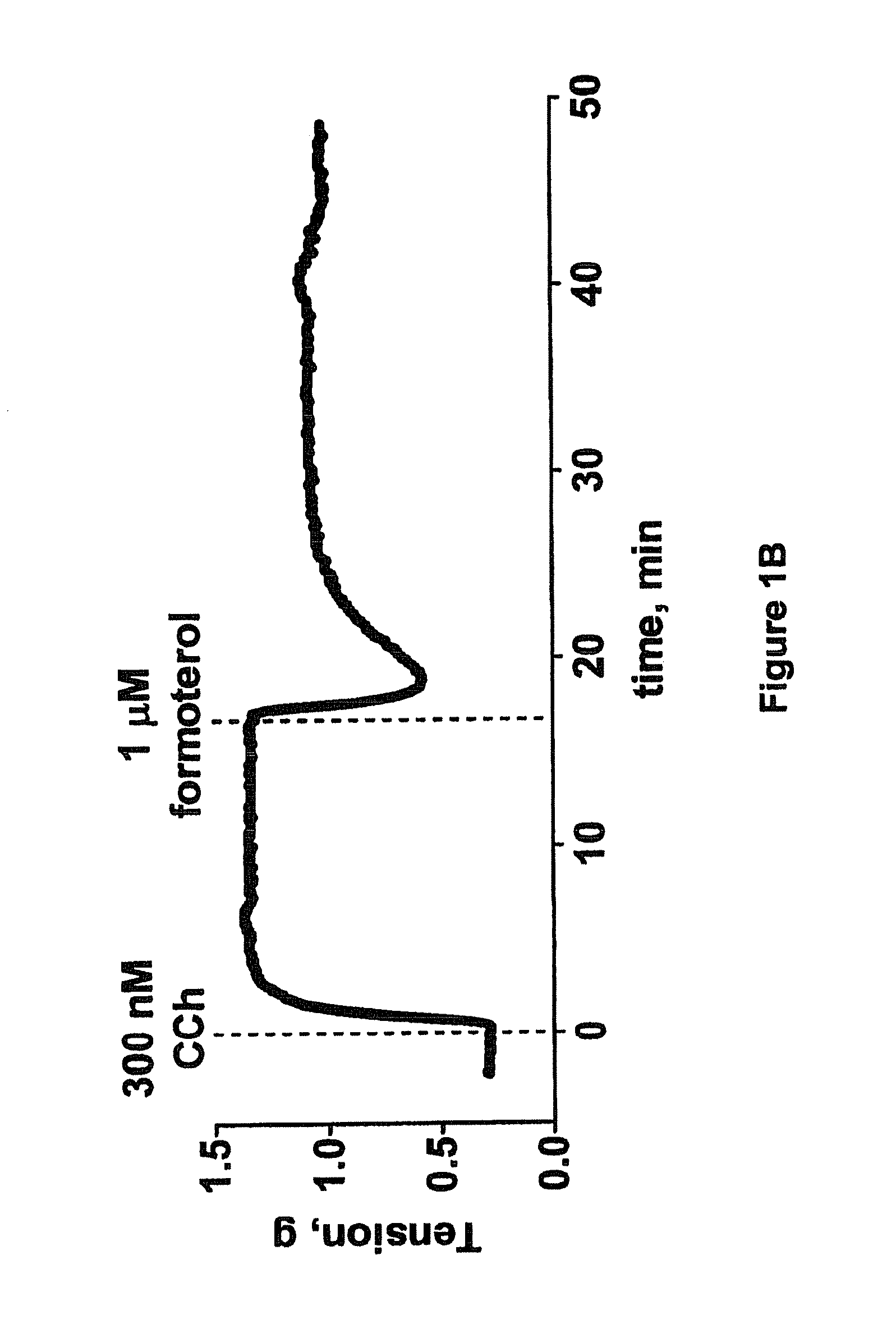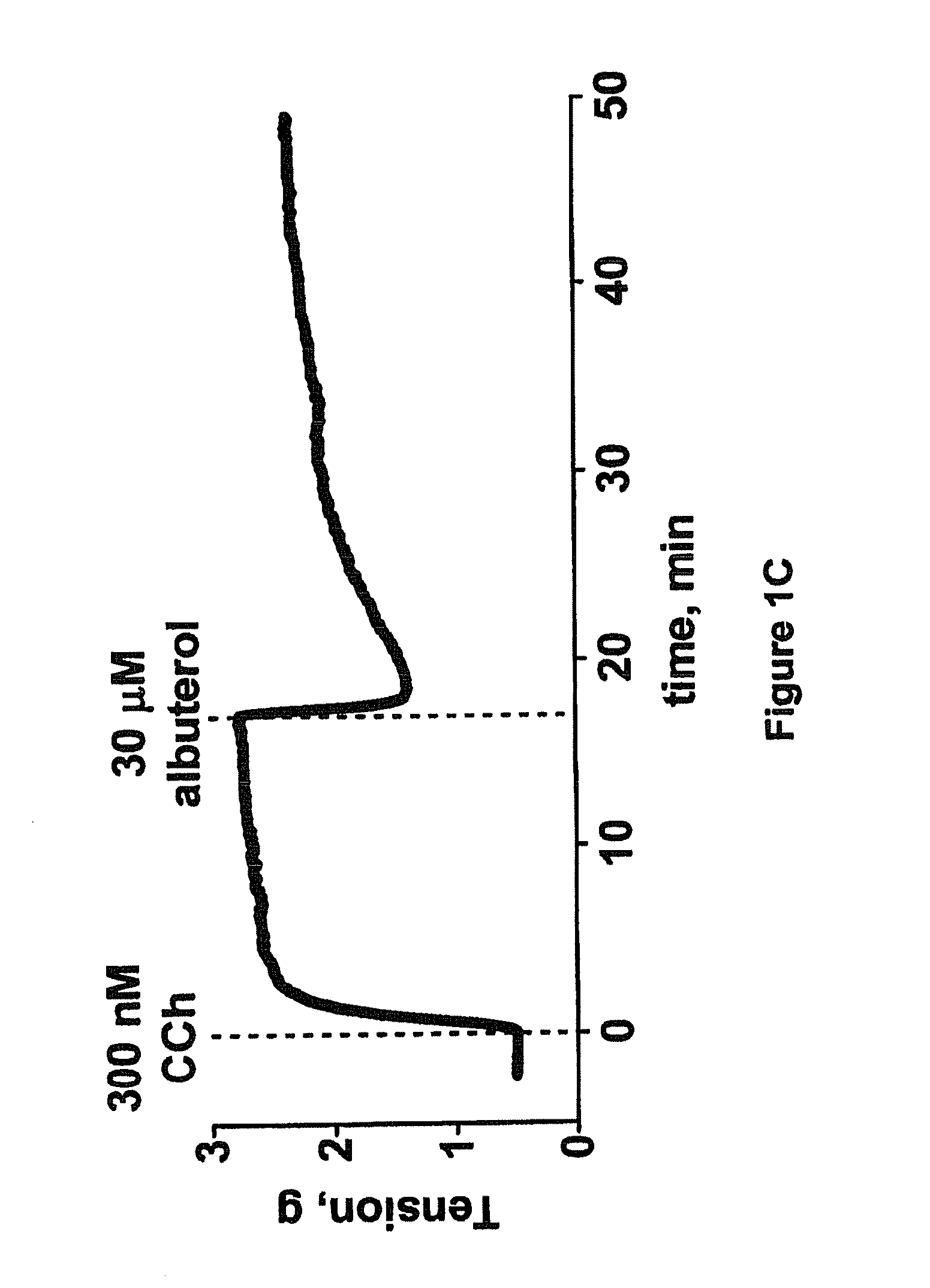Method for treating pulmonary diseases using rho kinase inhibitor compounds
a technology of kinase inhibitors and compounds, applied in the field of pulmonary diseases, can solve the problems of loss of effectiveness, loss of lung connective tissue integrity, and the effect of agonists being detrimental to control
- Summary
- Abstract
- Description
- Claims
- Application Information
AI Technical Summary
Benefits of technology
Problems solved by technology
Method used
Image
Examples
example 1
Efficacy of Rho Kinase Inhibitors in Tracheal Smooth Muscle with Reduced Responsiveness to Beta Adrenergic Receptor Agonist
Protocol
[0168]Trachea were excised from male Sprague-Dawley rats, cleaned of connective tissue and cut into cylindrical segments of 2-3 mm length. Two stainless steel wires were guided through the lumen of the tracheal ring. One wire was fixed in the tissue bath and the other was connected to a force transducer via surgical silk. Preparations were mounted in 5 ml water-jacketed organ baths (Radnoti Glass Technology) filled with Krebs buffer (95 mM NaCl, 5 mM KCl, 2.6 mM CaCl2, 1.2 mM MgSO4, 24.9 mM NaHCO3, 1.2 mM KH2PO4, 10 mM glucose) maintained at 37° C. and gassed with 95% O2 and 5% CO2. Indomethacin (1 μM), a cyclooxygenase inhibitor, was added to the Krebs buffer and was present throughout the experiments. Contractile tensions were measured using an isometric force transducer (Grass Instruments) and signals were analyzed using specialized software (Chart v5...
example 2
Efficacy of Rho Kinase Inhibitors in Tracheal Smooth Muscle with Reduced Responsiveness to Beta Adrenergic Receptor Agonist Due to Pretreatment with Pro-Inflammatory Cytokines
Relevance
[0170]Pulmonary disease such as asthma and COPD are accompanied by an inflammatory response in the lung that contributes to disease severity. In patients with corticosteroid resistant asthma and COPD, increased levels of TNFalpha and IL-1beta have been shown. These pro-inflammatory cytokines can alter tissue function and may limit the efficacy of therapeutic interventions such beta adrenergic receptor agonists. In vitro demonstration of compound efficacy in tissues that have been exposed to pro-inflammatory cytokines supports the utility of these compounds as bronchorelaxants in patients who have reduced responsiveness to treatment with beta adrenergic receptor agonist or the combined treatment with beta adrenergic receptor agonists and corticosteroids.
Protocol
[0171]Male Sprague-Dawley rats weighing 30...
example 3
Pulmonary Function Test in Human Patients Treated with Formoterol Protocol
[0173]Patients with asthma or COPD are randomized to albuterol or Rho kinase inhibitor compound test groups. After 2-weeks of run-in period, subjects are given a methacholine provocation test (MPT) to induce bronchoconstriction followed by treatment with increasing doses of albuterol or with increasing doses of Rho kinase inhibitor compound to induce bronchorelaxation to establish the subject's baseline response to albuterol or Rho kinase inhibitor compound. Subjects from both test groups are then randomized to inhaled formoterol twice daily or placebo for 2 weeks. At the end of the trial period, the albuterol test group subjects are again administered a methacholine provocation test to induce bronchoconstriction followed by treatment with increasing doses of albuterol. Similarly, the Rho kinase inhibitor compound test group subjects are again administered a methacholine provocation test to induce bronchoconst...
PUM
| Property | Measurement | Unit |
|---|---|---|
| Volume | aaaaa | aaaaa |
| Volume | aaaaa | aaaaa |
| Volume | aaaaa | aaaaa |
Abstract
Description
Claims
Application Information
 Login to View More
Login to View More - R&D
- Intellectual Property
- Life Sciences
- Materials
- Tech Scout
- Unparalleled Data Quality
- Higher Quality Content
- 60% Fewer Hallucinations
Browse by: Latest US Patents, China's latest patents, Technical Efficacy Thesaurus, Application Domain, Technology Topic, Popular Technical Reports.
© 2025 PatSnap. All rights reserved.Legal|Privacy policy|Modern Slavery Act Transparency Statement|Sitemap|About US| Contact US: help@patsnap.com



